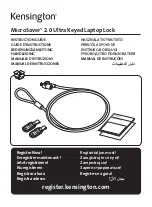
19
Set up
Securing the supply cable
Fig. 14: Securing the supply cable and plug
1.
Open cover
A
(Fig. 14) by around 15 degrees
(only as far until plug
B
(Fig. 14) fits in the con-
trol unit).
2.
Insert plug
B
(Fig. 14) into the control unit until
you feel initial resistance.
3.
Fully open cover
A
4.
Push plug
B
5.
Fully close cover
A
screw
C
Initial operation and configuration
Initial operation
e
The charger conducts a self test when it is con-
nected to the mains supply.
Following a successful self-test:
–
The
CHARGE STATUS
button lights
up white.
–
The charger is set to the charging power
of the previous charging operation.
50 %
,
100 %
and/or
50 %
indicator light lights
up.
🡆
The charger is ready for operation.
Selecting charge status
Fig. 15: Selecting charge status
Set whether the charger is to be limited to a maxi-
mum of 50 % or 100 % of the available charging
power. If an energy manager is available, you can set
whether the charging power is to be specified by the
energy manager.
b
The charger is ready for operation.
e
Press and hold the
CHARGE STATUS
button
for 3 seconds.
🡆
The charger switches to another charge status
(
50 %
,
100 %
or energy manager) and the rele-
vant indicator light lights up.
If the energy manager charge status is activa-
ted, the indicator light pulses yellow and the
charge status
50 %
lights up green. In the event
of a failure of the energy manager, the charger
switches to the charge status
50 %
.
For the charger to be controlled via the energy man-
ager, it must be connected with its PLC network.
Refer to chapter "Energy manager" on page 19.
Energy manager
The energy manager coordinates the energy consum-
ers and energy suppliers in the household.
For charging control to be assumed by the energy
manager, the charger and energy manager must be
connected to one another via a Powerline-Communi-
cation (PLC) network connection. For this to happen,
the existing mains supply is used to set up a local
network for data transfer.
Adding the energy manager
There are two options for connecting the energy
manager to a PLC network:
–
The energy manager is registered as a client in a
PLC network (application variant 3).
–
Direct PLC communication between the charger
and energy manager (DHCP server) (application
variant 4)















































